GREG ZELEK WITH THE DIAPASON BRASS & TIMPANI
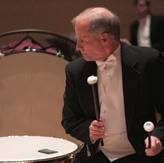
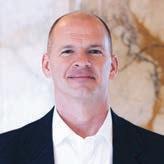

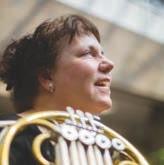

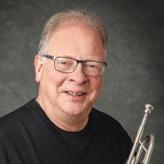



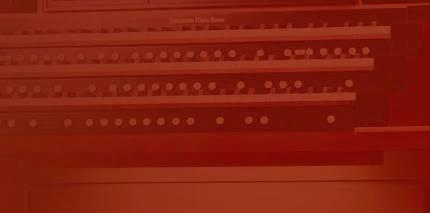


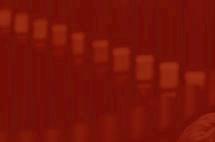

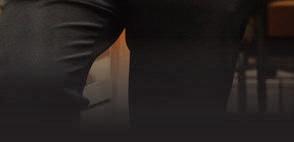
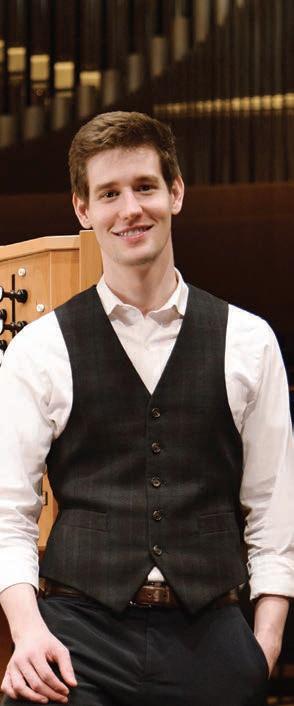


















2022
SEPTEMBER 27


greg zelek Paul Fey, Toccata Claude Debussy, Clair de Lune J.S. Bach, Gigue Fugue and “Little” Fugue in G minor John Weaver, Fantasia Florence Price, Adoration César Franck, Grand Pièce Symphonique



OCTOBER 25 christopher houlihan




J.S. Bach, Prelude and Fugue in A minor Robert Edward Smith, An Introduction to the King of Instruments: Variations on an American Folk Tune Franz Liszt, Fantasy and Fugue on “Ad nos, ad salutarem undam”

2023 FEBRUARY 28 alcee chriss
J.S. Bach (arr. Chriss), Sinfonia from Ich liebe den Höchsten von ganzem Gemüte Sergei Rachmaninoff (arr. Chriss), Symphonic Dances, Op. 45: I. Non-Allegro Bill Evans, “Waltz for Debby” Boëly, Fantasy and Fugue in Bb major Carlos Jobim, Desafinado César Franck (arr. Chriss), Symphony in D Minor, M. 48: II. Allegretto Max Reger: Fugue on B-A-C-H, op. 46


APRIL 18
greg zelek & thomas mesa
Nadia Boulanger, 3 pieces for cello and organ Andrea Casarrubios, Seven J.S. Bach, Sonata for viola da gamba in D major, J.S. Bach, Fugue in D major Daniel Ficarri, Sonata for Organ and Cello (world-premiere)

Programs, dates, and artists subject to change.


As we gather in this space for these concerts, the Madison Symphony Orchestra acknowledges the Ho-Chunk Nation’s ancestral lands and celebrates the rich traditions, heritage, and culture that thrived long before our arrival. We respectfully recognize this Ho-Chunk land and affirm that we are better when we stand together.



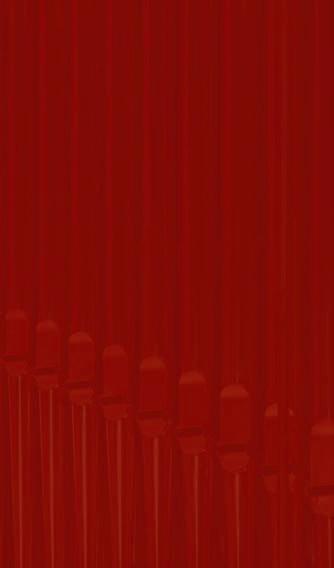



For over a century, we have worked side-by-side with our clients to navigate the complex legal issues affecting their lives. We know the best counsel comes with a wide lens and the perspective to see all available options. Together, we can chart the best path forward.





MADISON

222 W. Washington Ave., Suite 460 Madison, WI 53703 Phone (608) 257-3734 Fax (608) 280-6192 info@madisonsymphony.org


201 State St. Single Tickets: (608) 258-4141
Ticket O ce Hours: Mon. – Fri., 11:00 a.m. to 5:30 p.m. Sat. 11:00 a.m. to 2:00 p.m. Additional hours on Sunday event days. ©2022, Madison Symphony Orchestra, Inc. Amanda Dill, Editor

Email: adill@madisonsymphony.org
All rights reserved. May not be produced in any manner, in whole or in part, without written permission from Peter Rodgers, Director of Marketing.
For advertising information, contact: Peter Rodgers (608) 260-8680 x226.
The Overture Concert Organ is the gift of Pleasant T. Rowland.
Support for all Overture Concert Organ Programs is provided by the Diane Endres Ballweg Fund.
We wish to thank our other organ contributors, the Malmquist Family, two Anonymous Donors, and Friends of the Overture Concert Organ.
Greg Zelek is the Madison Symphony Orchestra’s Principal Organist and the Elaine and Nicholas Mischler Curator of the Overture Concert Organ.
Welcome to the MSO!
Please turn o your electronic devices and cell phones for the duration of the concert.
Photography and video are not permitted during the performance. Please take and share photos at the end of the concert. Thank you!
Friday, May 20, 2022
Overture Concert Organ Series | Program No. 4
Greg Zelek, Organ John Aley, Trumpet Matthew Onstad, Trumpet Mark Hetzler, Trombone Linda Kimball, Horn Joshua Biere, Tuba JohnJutsum, Timpani
Eugène Gigout (1844-1925) Grand chœur dialogue, arr. John Kuzma
DIAPASON BRASS MR. JUTSUM MR. ZELEK
ROBIN DINDA (B.1959)
Nocturne for Brass Quintet and Organ
DIAPASON BRASS MR. ZELEK
JOHN WEAVER (1937-2021) Toccata MR. ZELEK
SERGEI RACHMANINOFF (1873-1943)
VOCALISE, OP.34, NO.14
MS. KIMBALL MR. ZELEK
EDWARD ELGAR (1857-1934)
Pomp and Circumstance March No.1 in D Major, Op. 39, No.1, arr. Hans Zellner and Charles Warren
DIAPASON BRASS
MR. JUTSUM MR. ZELEK
ANTHONY DILORENZO (B. 1967) Fire Dance
DIAPASON BRASS
JOHANN SEBASTIAN BACH (1685-1750)
Toccata and Fugue in D minor, BWV 565, version inspired by Randall Max
MR. JUTSUM MR. ZELEK
ARTHUR SULLIVAN (1842-1900)
The Lost Chord, arr. Alexander Schreiner
MR. ZELEK
ALEXANDRE GUILMANT (1837-1911)
Final from Symphony No.1 for Organ and Orchestra, Op.42, arr. Craig Garner
DIAPASON BRASS
MR. JUTSUM MR. ZELEK
Praised as “extraordinary in the classical music world” (Jon Hornbacher, PBS Wisconsin Life), Greg Zelek is the Principal Organist of the Madison Symphony Orchestra and Curator of the Overture Concert Organ, where he oversees all of the MSO’s organ programming. Since September 2017, Greg has proudly held the Elaine and Nicholas Mischler Curatorship. In addition to concertizing throughout the United States, Greg regularly performs with orchestras as both a soloist and professional ensemble member, including the Florida Orchestra, Ridgewood Symphony, Jacksonville Symphony, MET Orchestra, and Miami Symphony

Orchestra. In 2016, Greg was chosen by The Diapason magazine as one of the top “20 Under 30” organists, a feature which selects the most successful young artists in the field. He was the First Prize winner in the 2012 Rodgers North American Classical Organ Competition, the 2012 West Chester University Organ Competition, and the 2010 East Carolina University Organ Competition. A recipient of the inaugural Kovner Fellowship, Greg received his Bachelor’s and Master’s degrees, as well as an Artist Diploma, from the Juilliard School as a student of Paul Jacobs.



John Aley is the trumpet professor emeritus of the UW-Madison School of Music. He is a former member of the American Brass Quintet, with whom he performed extensively throughout the U. S. and internationally. He has performed with New York ensembles Musica Sacra, American Symphony Orchestra, Orpheus Chamber Ensemble and American Composers’ Orchestra. He has recorded with the American Brass Quintet, PDQ Bach Orchestra, Orpheus Chamber Ensemble, American Composers’ Orchestra, Wisconsin Brass Quintet and has a solo recording Autumn.
Aley has performed as soloist with the English Chamber Orchestra, Composers’ Brass Group, and the Vienna Chamber Orchestra in concert with Maurice Andre. He has performed as principal trumpet and soloist with the Wichita Symphony, and the Greenwich and Stamford Symphony Orchestras. As principal trumpet with the Madison Symphony Orchestra he has been featured as a soloist on several occasions. He counts himself as fortunate to have performed in orchestras under the baton of legendary musicians Leonard Bernstein and Aaron Copland. During the summer he is a Valade Fellow and artist/teacher at the Interlochen Arts Camp, Michigan. Aley has also taught and performed at the Aspen Music Festival, the Yale Summer School of Music, UW-Madison Summer Music Clinic, the New England Music Camp, Minnesota Festival of the Lakes and the Hot Springs Music Festival. John Aley has also been a faculty member at Brooklyn College of Music, Wichita State University, and Western Connecticut State College. He has been a featured performer, clinician and adjudicator for the International Trumpet Guild.
A Wisconsin native, Dr. Matthew Onstad serves as Assistant Professor of Trumpet at the University of WisconsinWhitewater where he teaches applied trumpet, coaches chamber music, performs with the Whitewater Brass Quintet, and teaches arts appreciation courses.

While earning his DMA and MM degrees from the University of Wisconsin-Madison, Dr. Onstad served the Mead Witter School of Music as a Project Assistant performing with the Wisconsin Brass Quintet, a faculty ensemble-in-residence. He
holds the rank of Sta Sergeant in the 132nd Wisconsin Army National Guard Band and has performed with the Milwaukee Symphony Orchestra, ProMusica Chamber Orchestra, Milwaukee Ballet Orchestra, Madison Symphony Orchestra, Wisconsin Chamber Orchestra, Orchestra Iowa, Illinois Symphony Orchestra, and the Isthmus Brass. He held the position of Principal Trumpet with the Quad City Symphony Orchestra from 2016-2021.
Dr. Onstad has previously taught trumpet at St. Ambrose University, the University of Wisconsin-La Crosse and the University of WisconsinOshkosh. He has served as a master clinician with the Wisconsin Brass Quintet, the 132nd Army Band, and the Quad City Symphony Orchestra throughout the United States. Dr. Onstad received his BM from the University of WisconsinOshkosh. His teachers include John Aley, Alex Noppe, Jean Laurenz, Marty Robinson, and Robert Levy.
Matthew is an Edwards Artist and Clinician.
Born in Sarasota, Florida in 1968, Mark Hetzler began playing his father’s trombone at the age of twelve. He went on to receive a B.M. from Boston University and an M.M. from the New England Conservatory of Music. Mark was a fellow at the Tanglewood Music Center and completed a three-year fellowship with the New World Symphony, under the direction of Michael Tilson Thomas.
As a member of the Empire Brass Quintet from 1996-2012, Mark performed in recital and as a soloist with symphony orchestras around the world. He has appeared with the group on live television and radio broadcasts in Asia and the United States. Mark appears on several Empire Brass CDs on the Telarc label, including
Firedance, The Glory of Gabrieli, and a recording of Baroque music for Brass and Organ.
Mark has released twelve solo recordings on the Summit Records label, featuring classical, jazz and electro-acoustic genres. Active in the creation of new music, he has worked with composers in some of the leading new music research studios around the world, and has appeared at the New York Electro-Acoustic Music Festival and the Society for ElectroAcoustic Music (SEAMUS). Recent commissions include new works from composers Ben Davis, David Vayo, James Stephenson, Mark Engebretson, Chester Udell and Robert Rowe. In addition, Mark is active as a composer and arranger, fusing classical styles with many nonclassical influences. He can be heard performing his own original music on an electric trombone in the adventurous new music group Mr. Chair.
Former Principal Trombone of the Hartford Symphony Orchestra, Mark has performed with the Minnesota Orchestra, the Boston Symphony Orchestra, the Boston Pops and the Florida Orchestra. He is the Professor of Trombone at the University of WisconsinMadison and a member of the Wisconsin Brass Quintet.

Linda Kimball is principal horn of the Madison Symphony Orchestra and Wisconsin Chamber Orchestra.

The exciting musical life of hornist Linda Kimball includes performance, teaching, arranging, and composition. In addition to her active orchestral career, Linda had been involved extensively in chamber music; having been a decades-long member of both the Wingra Woodwind Quintet, the Whitewater Brass Quintet, and the Artemis Horn Quartet.
Linda served on the music faculty at the University of Wisconsin-Whitewater for 35 years. She created the annual UW-W “Fall Horn Festival” –a day-long extravaganza for horn-players of all ages. The lack of excellent music for young horn ensemble prompted Linda to begin writing and arranging; she has over four dozen compositions and arrangements, ranging from Mozart to Broadway show tunes. Having recently retired from her teaching position at UW-Whitewater, Linda looks forward to having more time for creating music.
The horn has taken Linda to Austria, France, Germany, Hungary, Scotland, and Sweden, and sometimes to the orchestra pit at the Overture Center for Broadway shows like “The Lion King” and “Wicked.” Linda received a Bachelor of Music degree in music education from the Lawrence Conservatory of Music, and a Master of Music degree in horn performance from the University of Wisconsin-Madison.
Josh Biere has been principal tubist in the Madison Symphony since 2013, and formerly held same position with the Kenosha Symphony. He has performed with many local orchestras including the Milwaukee Symphony, St. Paul Chamber Orchestra, DeMoines Symphony, Debuque Symphony, Rockford Symphony as well as many others.

An established chamber musician, he has played in numerous ensembles and in dozens of venues in the Chicagoland area, and has soloed with many groups and given numerous recitals throughout the region. He is a highly sought after clinician and teacher, maintaining a studio of well over thirty-five tuba and euphonium students.
Mr. Biere holds degrees from Illinois Wesleyan University and Northwestern University, and is currently pursuing a DMA at University of Wisconsin Madison as a Paul J. Collins Wisconsin Distinguished Graduate Fellow. His principal teachers include Emily Binder, Ed Risinger, Rex Martin and Tom Curry. Mr. Biere currently resides in Sun Prairie, WI with his wife three kids and two cats. He enjoys reading, video games, puzzles, delicious food, and philanthropy work, especially with Habitat for Humanity.
Principal Timpani with the Madison Symphony Orchestra, John Jutsum has performed in the United States with the Jacksonville, Toledo and Utah Symphonies, the Philharmonia Virtuosi of New York, the St. Paul Chamber Orchestra, and the Wisconsin Chamber Orchestra. Born in Anchorage, Alaska, his early musical training was in piano, with percussion initially a secondary pursuit. Having entered the Oberlin
Conservatory as a pianist, he soon changed course and obtained a B.M. in Percussion and Music Theory from Oberlin followed by a M.M. from The Juilliard School. His principal teachers included Michael Rosen, Barry Jekowsky, Roland Kohlo , Michael Bookspan, and Paul Yancich. After freelancing in New York City and spending summers with the Colorado Philharmonic (now National Repertory Orchestra) and as a Fellow at the Tanglewood Music Center, he was appointed Principal Timpani of L'Orchestra Sinfonica della RAI in Torino, Italy where he performed for five years. He has performed with a variety of internationally acclaimed conductors, including Rafael Frühbeck di Burgos, Carlo Maria Guilini, Eliahu Inbal, Ferdinand Leitner, and Yuri Temirkanov. Currently in his twentieth season with the MSO, John also works as an IT director in Minneapolis, where he resides with his wife Polly. Their daughter Robyn lives in New York City.
 JOHN JUTSUM
JOHN JUTSUM












This final program features Madison Symphony Orchestra organist Greg Zelek, timpanist John Jutsum, and the Diapason Brass: John Aley and Matthew Onstad, trumpets, Linda Kimball, horn, Mark Hetzler, trombone, and Joshua Biere, tuba. This wideranging program includes solo showpieces for organ by John Weaver and Arthur Sullivan, and a work for brass quintet by Anthony DiLorenzo. But most of this concert is devoted to works composed or adapted for various combination of organ, brass, and timpani: music in diverse styles by Eugène Gigout, Robin Dinda, Sergei Rachmanino , Edward Elgar, J.S. Bach, and Alexandre Guilmant.
Eugène Gigout (1844-1925) Grand chœur dialogue, arr. John Kuzma
The French organist and composer Eugène Gigout was born in Nancy, but moved to Paris at age 13 to study at the Ecole Niedermeyer—a conservatory devoted largely to the training of church musicians. While there, Gigout studied with Camille SaintSäens, and eventually taught at the school. In 1863, at age 19, he was appointed organist at the Parisian church of Saint-Augustin,
a position he would hold for some 62 years until his death in 1925. In 1885, Gigout founded his own highly successful school of organ playing and improvisation, and in 1911, he succeeded Alexandre Guilmant as organ professor at the Paris Conservatory. Gigout published hundreds of works during the course of his long career, most of them concert and service music for organ. Like his teacher Saint-Säens, Gigout maintained a rather conservative style throughout his life, with a Classical approach to musical form and harmony. One of his finest works is the 1881 Grand chœur dialogué, written as a showpiece for the fine instrument at SaintAugustin, which was installed by the English builder Charles Barker. The title refers to the “dialogue” of timbres between various manuals and stops possible with a large organ. It is heard here in an arrangement by John Kuzma that replaces the alternation between organ timbres with alternation between organ and brass. It opens with a bold and strident fanfare before moving to lighter music introduced on the organ manuals. This is intensified by the full ensemble, eventually working its way to a reprise of the opening fanfare, and a wonderfully “over the top” conclusion.
Robin Dinda was born in Kansas, and grew up in Virginia and Florida. Though he had piano lessons from his grandmother as a child, he was largely self-taught on organ—and by age 16, he was playing solo organ recitals in Europe. Since 1989, he has served on the faculty of Fitchburg State University in Massachusetts. He has long had a career as a soloist, often in duo recitals with his wife, organist Renea Waligora. (Dinda has written organ duos—four hands and four feet at a single instrument—for their recitals, which have since become standard repertoire.) His quiet Nocturne for Brass Quintet and Organ was composed in 1996. It begins with a serene introduction from the brass (the music is marked Ethereal; Freely) which is decorated by the organ. A lovely flowing theme is laid out by trumpet, horn, trombone and tuba in turn, and played finally by the full ensemble. The organ then expands on the theme before a hushed conclusion.
Born in Pennsylvania, organist John Weaver trained at Philadelphia’s Curtis Institute and at the Union Theological Seminary. He later taught organ at Curtis (1972-2003), and also served as head of the organ department at New York’s



Juilliard School (1987-2004).

In 1970 he was appointed organist at the Madison Avenue Presbyterian Church in New York City, a position he held until his retirement in 2005. Weaver continued an active career as an organ soloist into his early 80s. He wrote his short and exciting Toccata in 1968—a brilliant virtuoso showpiece for both the organist and the organ. It begins with a burst of triplets, answered by the pedals. There is a brief moment of repose in the middle, as one hand introduces a new, slightly more relaxed idea, though the triplet figure continues unbroken in the other hand. It
ends with an aggressive reprise of the opening material.
Sergei Rachmanino (1873-1943) Vocalise, Op.34, No.14
Rachmanino was known in his time as one of the world’s great pianists, and then and now as a great composer of music for his instrument and for orchestra. Much less wellknown today is his vocal music: several exceptionally fine Russian Orthodox choral works and over 80 art songs. The great exception to this, however, is his Vocalise, the last of his Op.34 Fourteen Songs (1912), one of
Farley’s House of Pianos is home to one of the nation’s only full-service piano restoration workshops.
Farley’s restoration experts have skillfully rebuilt pianos for over 45 years. Their attention to detail produces unsurpassed sound and beauty.
See and hear pianos at farleyspianos.com 6522 Seybold Road, Madison • 608.271.2626

Rachmanino ’s most familiar works, and one which is known in many versions. As anyone who has ever taken a voice lesson will tell you, a “vocalise” is a wordless piece or etude that is designed to work on a specific aspect of range or technique, or which allows the student to focus on creating a beautiful sound without the need to worry about enunciating a text. Rachmanino ’s Vocalise is no mere exercise: in the original, it frees the singer (and the listener) to focus on the work’s gorgeous melody as it spins out from the opening bars. It was an immediate favorite of singers, and Rachmanino returned to the piece in 1915, revising it slightly, and creating a series of instrumental arrangements—solo piano, violin and piano, violin and orchestra, and in 1919, for orchestra. The Vocalise proved to be enduringly popular and exists in hundreds more arrangements for everything from choir and orchestra, to saxophone quartet and solo accordion. Here it is heard in a version combining the beautiful sound of Linda Kimball’s horn playing with organ accompaniment.
Edward Elgar (1857-1934)
Pomp and Circumstance March No.1 in D Major, Op. 39, No.1, arr. Hans Zellner and Charles Warren
In 1901, when he was riding high on the success of his Enigma Variations and the oratorio The
Dream of Gerontius, Elgar turned to one of the most popular instrumental forms of the day, the march, producing the first two numbers of a series of five PompandCircumstance marches that would appear sporadically over the next 30 years. The title—a reference to a warlike passage from Shakespeare’s Othello—would seem to indicate a certain amount of seriousness and pretention, but Elgar had simply set out a to write a good old rousing march. After he completed Pompand CircumstanceMarch No.1 in 1901, he bragged to a friend that “I’ve got a tune that will knock ‘em flat.” And it did: two days after their premiere in Liverpool, both marches were played at one of the famous Promenade concerts in London, and the audience demanded two encores of March No.1—the only double encore in the long history of the “Proms.” When he was engaged later that year to write a choral ode for the coronation of King Edward VII, Elgar reused the march’s trio section to set the final section, Land of HopeandGlory, which remains a popular British patriotic song today. Its inseparable connection with American graduation ceremonies dates from 1905, when Elgar was invited to receive an honorary doctorate at Yale University. In honor of the composer, March No.1 was used as a recessional, and within a few years, colleges and high schools across the United States had
adopted it as a graduation march. After a brief opening flourish, Elgar introduces the primary march, a pair of jaunty and rhythmically active tunes paired with blazing countermelodies. The tempo suddenly slows for the trio, as the HopeandGlory theme is laid out with increasing grandeur above a solemnly plodding bassline. There is a recapitulation of the march, and then the trio reappears in full glory, before a short and lively coda.
Trumpet-player and composer
Anthony DiLorenzo trained at Philadelphia’s Curtis Institute, and later worked with Leonard Bernstein at the Tanglewood Center. As a performer, he has appeared as a trumpet soloist with the Boston Symphony Orchestra, Boston Pops, and New York Philharmonic, and has held positions with the Philadelphia Orchestra, New World Symphony, Santa Fe Opera, and Utah Symphony. Also active in chamber music, DiLorenzo had a long tenure with the City Center Brass Quintet, one of America’s leading brass ensembles. As a composer, he has extensive television and film credits, and has won an Emmy award for his television work. His concert music has been performed by several major orchestras and chamber ensembles across the country. DiLorenzo composed the short
and intense Fire Dance in 2004, for the City Center Brass Quintet. The piece blazes through several short ideas in the course of under four minutes: a rhythmically complex opening, a lyrical theme introduced by the tuba, and increasing frantic music leading to an exhilarating ending.
Johann Sebastian Bach (1685-1750)
Toccata and Fugue in D minor, BWV 565, version inspired by Randall Max
Bach was known in his day primarily as one of Germany’s great organists—as a keyboard composer and a powerful improviser. It is ironic then, that there is some doubt that the organ work by Bach that nearly everyone knows—the famous Toccata and Fugue in D minor heard here—is in fact by Bach. A little background... There is no original copy of the work in Bach’s handwriting, and the earliest surviving version was copied by another organist, probably after Bach’s death. This in itself is hardly unusual—most of Bach’s keyboard music survives in copies by his sons or other musicians. Most biographers have assumed that this bravura work was one the showy pieces a very young Bach wrote for his first important professional position, as church organist in Arnstadt, 1703-06. However, since the 1980s others have challenged the attribution of the work to
Bach, noting that there are some technical crudities and other details that are inconsistent with Bach’s undisputedly authentic works—even suggesting that this later copy was an organ arrangement of a violin work. Biographers such as Christoph Wol have countered that some of the unusual features in the work may in fact have been ingenious adaptations to the limitations of the organ Bach used at Arnstadt. All musicology aside, however, this work is now inextricably tied to Bach! There is a long tradition of adapting this work for soloists and ensembles, beginning with Leopold Stokowski’s famous orchestral transcription of 1927. It is heard it here in the original organ version, but with the addition of a prominent timpani part. The work begins with a free-form toccata— an improvisatory-style piece used as prelude. After a grand conclusion, the fugue begins with a complex and spiky subject. This is developed in intense counterpoint until the end, where there is a dramatic return to the texture of the toccata.
The Lost Chord, arr. Alexander Schreiner
Though he is best known today for the enduringly popular series of operettas he wrote with W.S. Gilbert, Arthur Sullivan was among the most successful composers of Victorian England,
composing in many genres. He wrote serious operas, popular orchestral works, large sacred and dramatic cantatas, hymns (including the well-known Onward, Christian Soldiers ), and dozens of art songs and popular “parlor songs”—sentimental songs written for the enormous popular market, primarily sung at home. By far his most popular song was The Lost Chord , written in 1877, a composition that came out of personal tragedy. Sullivan had first tried to set this poem to music in 1872 at the time of his father’s death, but in 1877 he composed The Lost Chord while sitting at the bedside of his brother Fred, completing it just a few days before Fred died. The poem, by popular Victorian poet Adelaide Ann Proctor, had been published in 1858 in The EnglishWoman’s Journal . It tells of an organist— usually assumed to be a woman, though that is never really specified—distracted by some personal tragedy, whose “fingers wandered idly, over the noisy keys.” Suddenly the organist stumbles upon a chord “like the sound of a great Amen,” seemingly sent from heaven. The next verses describe the chord’s e ect, flooding the room and the organist with a sense of peace, love, and fulfillment, before it finally fades away. In the end, the organist seeks in vain to rediscover the chord, concluding that “It may be that only in Heav’n I shall hear
that grand Amen.” Sullivan’s setting, originally for piano and solo voice, is really a kind of miniature romantic tone poem, beginning with a quiet recitative that culminates in the discovery of the “great Amen.” The middle section conveys a sense of awe as the chord fills the room and the organist’s spirit. There is a brief moment of turbulence near the end to represent the search for the “lost chord divine,” but it ends in an ecstatic mood, contemplating heaven. The Lost Chord was a tremendous hit, quickly introduced in concerts by leading singers of the day, and its sheet music went through several editions. It was quickly picked up by instrumentalists as well. The first recording of the song—and, in fact, one of the earliest surviving sound recordings of music of any kind—was a performance by cornet and piano captured on an Edison phonograph in 1888. The Lost Chord became particularly popular as a choral piece, and was a staple of British and American church choirs and choral societies well into the 20th century.
Alexandre Guilmant (1837-1911)
Final from Symphony No.1 for Organ and Orchestra, Op.42, arr. Craig Garner
Guilmant was one of the great French organists of the “golden age” of French organ music, a contemporary and colleague
of Franck, Saint-Saëns, Vierne, and Widor. He was born in the provincial town of Boulognesur-Mer, and after initial studies with his father—also an organist—and at the Brussels Conservatory, Guilmant settled in Paris, eventually serving as organist at the prestigious new parish church La Trinité. Throughout his career he was associated with the organbuilding firm of Aristide Cavaillé-Coll, and was often brought in to perform inaugural concerts on its instruments. He toured widely as recitalist in Europe and America, and in 1896, he joined the faculty of the Paris Conservatory as organ professor. Guilmant’s musical interests were broad: he was well aware of the latest developments of the French avant garde , but was also passionately interested in the music of Couperin, Handel, Bach and earlier composers, editing hundreds of pieces from the 17th and 18th centuries for publication. He composed a sprinkling of vocal pieces and a few small instrumental works, but the vast majority of his works are for organ. He published over 50 collections of music with titles like The Practical Organist and The LiturgicalOrganist —music still very much in use by church organists today. He composed several small works for organ and orchestra—mostly for his popular concerts at Paris’s
Palais du Trocadero, a concert hall that was built around a magnificent Cavaillé-Coll instrument. Guilmant’s most ambitious works for organ are a series of eight multimovement sonatas, written between 1874 and 1906. He later orchestrated two of the sonatas as symphonies for organ and orchestra. The first sonata was transformed into the Symphony No.1 , and Guilmant played its premiere at the Trocadero on August 22, 1878. It is heard here in arrangement by Craig Garner for organ with brass and
timpani. Its third movement, Final , is the symphony’s exciting conclusion. It opens with a bold toccata-style statement by organ punctuated by the brass. This gives way eventually to a broad chorale played first by organ and then by brass. The two ideas are mixed in a short development section, before a full-throated reprise of the toccata and a grandiose version of the chorale. Trumpet fanfares lead into a splendid coda.
program notes ©2022 by J. Michael Allsen









In 2004, Pleasant T. Rowland gave the magnificent Overture Concert Organ as a gift to the Madison Symphony Orchestra. Lead gifts of $1 million from Diane Endres Ballweg and $500,000 from an anonymous donor established the Organ Endowment Fund, a permanent fund which helps support Overture Concert Organ programming and care of the instrument.
To help ensure the instrument will continue to be heard by future generations, the MSO and Friends of the Overture Concert Organ are seeking an additional $500,000 for the organ endowment. Currently, just $180,000 is needed to reach this goal!

“Madison is so blessed to have the Madison Symphony Orchestra’s ‘Mighty Klais’ in Overture Hall. It is a complex, wonderful instrument, and we wish all future generations to experience the pure joy in sound that it can produce.”
–Nicholas and Elaine Mischler
Tutti Donors
GIFT LEVELADOPTION DEFINITION $250,000 $Adopted $25,000 $10,000 $5,000 $2,500 $1,000
Organ Console
Tutti (Full Organ) Division Stop Façade pipes Single pipes - Major Single pipes - Minor
With a gift of $1,000 or more, you can adopt part of the Overture Concert Organ. Call the MSO o ce at (608) 257-3734 or email info@madisonsymphony.org to request an Adopt-a-Stop brochure. Visit madisonsymphony.org/adoptastop for additional information.
The cabinet containing the keyboards, pedals, and stops. When all the stops are pulled out. A grouping of stops. A grouping of pipes. Pipes that are visible. Pipes located in the organ chamber that are not visible. Up to $999General donation to the Organ Endowment Fund

Thank you to these generous donors for their gifts of $1,000 or more to the Madison Symphony Orchestra’s Overture Concert Organ Endowment Fund. Donors who have chosen to adopt individual parts of the organ are listed with their individual adoptions.
Nicholas and Elaine Mischler
Friends of the Overture Concert Organ in honor of Samuel C. Hutchison Great Division
Gamber F. Tegtmeyer, Jr., in memory of Audrey Tegtmeyer Swell Division
Friends of the Overture Concert Organ in honor of Gregory C. Zelek in celebration of his Golden Birthday Solo Division
STOP
John and Christine Gauder Pedal Contra Bombarde 32’
Reynold V. Peterson Swell Basson 16’
Lise Skofronick
Solo Harmonic Flute 8’
John and Carol Toussaint Pedal Posaune 16’
Ann Wallace
Solo French Horn 8’
An Anonymous Friend
Dr. Frederick W. Blancke
Great Principal 16’ – F²
Daniel and Stacey Bormann in memory of Larry Shrode Great Principal 16’ – D²
Thomas A. Farrell in honor of Ann Farrell Great Principal 16’ – A³
Jane Hamblen and Robert F. Lemanske Great Principal 16’ – B¹
Sandra L. Osborn Great Principal 16’ – C³
Anne Bolz in honor of Greg Upward Solo Harmonic Flute 8’ – G³
In Memory of Lila Smith Lightfoot Solo Tuba 16’ – C¹
Vicki and Marv Nonn
Pedal Double Open 32’ – C¹
Barbara and Richard Schnell Solo French Horn 8’ – D1
Barbara and Richard Schnell Solo French Horn 8’ – E1
Fernando and Carla Alvarado
Solo Principal 8’ – C³
Fernando and Carla Alvarado in honor of Nicholas and Elaine Mischler Swell Quintflöte 2 2/3’ – F¹
Brian and Rozan Anderson Bassoon 16’ – A2
Chuck Bauer and Chuck Beckwith Choir Clarinet 8’ – B²
Nancy Becknell Solo French Horn 8’ – C¹
Ed and Lisa Binkley Pedal – Vox Balinae 64’ – C¹
Patricia Brady and Robert Smith Solo French Horn 8’ – B2
Capitol Lakes Swell Fugara 4’ – D3
Friends of the Overture Concert Organ in honor of Reynold Peterson Great Trompete 8’ – G3
Friends of the Overture Concert Organ 2015-2016 Board of Directors in honor of Elaine Mischler Choir Clarinet 8’ – B-Flat¹
Friends of the Overture Concert Organ 2019-2020 Board of Directors in honor of Ellsworth Brown Solo Harmonic Flute 8’ – E³
Paul Fritsch and Jim Hartman
Solo French Horn 8’ – A3
Paul Fritsch and Jim Hartman in honor of Karissa Fritsch
Solo French Horn 8’ – F4
Paul Fritsch and Jim Hartman in honor of Bethany Hart
Solo Harmonic Flute 8’ – B3
Paul Fritsch and Jim Hartman in honor of Paige Kramer
Solo French Horn 8’ – G2
Dr. Robert and Linda Graebner Great Principal 8’ – C¹
Kris S. Jarantoski Swell Bordun 8’ – C³
Darko and Judy Kalan in honor of Samuel C. Hutchison Swell Basson–Hautbois 8’ – C¹
Carolyn Kau and Chris Hinrichs Choir Suavial 8’ – C³
Gary Lewis
Swell Basson–Hautbois 8’ – C³
Connie Maxwell Swell Basson–Hautbois 8’ – A³
Gale Meyer
Solo French Horn 8’ – G1
Susanne M. Michler Swell Trompette Harmonique 8’ – C³
Stephen D. Morton Swell Bourdon 16’ – C¹
Casey, Eric, Dylan, and Kendall Oelkers in honor of Walter & Barbara Herrod's 50th Anniversary
Solo Harmonic Flute 8' - G2
Larry and Jan Phelps Pedal – Subbass 16’ – C¹
Hans and Mary Lang Sollinger Swell Traversflöte 4’ – A²
Harriet Thiele Statz Choir Gemshorn 8’ – A3
Two Friends in honor of Jack Hicks Great Principal 8’ – C3
Anders Yocom and Ann Yocom Engelman Solo Principal 8’ – A²

Johannes Klais Orgelbau — Bonn, Germany 2004 • 72 Ranks
GREAT 4-1/2” wind
Principal Principal Offenflote Salicional Gedeckt Principal Rohrflote Quinte Octave Cornett V Mixtura mayor V Trompete Trompete
SWELL (enclosed) 4-1/2” wind Bordun Tibia Bordun Viola da Gamba Voix Celeste Fugara Transversflote Quintflote Octavflote Terzflote Plein jeu IV Basson Trompette harmonique Basson-Hautbois Clairon harmonique Tremulant
CHOIR (enclosed) 4” wind Geigen Principal Suavial Rohrflote Gemshorn Unda maris Octave Viola Waldflote Quinte Terz Mixtura minor IV Clarinet Tremulant
16 8 8 8 8 4 4 2-2/3 2 16 8 16 8 8 8 8 4 4 2-2/3 2 1-3/5 16 8 8 4 16 8 8 8 8 4 4 2 2-2/3 1-3/5 8
SOLO (enclosed) 11” wind Principal Harmonic Flute Stentor Gamba Gamba Celeste Tuba Tuba French Horn PEDAL 5” wind
Vox Balinae (Resultant) Double Open Untersatz Open Wood Violon (Gt) Bourdon (Sw) Subbass Octavbass Harmonic Flute (Solo) Stentor Gamba (Solo) Gedackt Octave Contra Bombarde Posaune Tuba (Solo) Trompete Clairon
ACCESSORIES
15 10 8 5 5
General Pistons General Toe Studs Divisional Pistons Pedal Divisional Toe Studs Divisional Cancel Pistons Sequencer Programmable Crescendo and Tutti
8 8 8 8 16 8 8 64 32 32 16 16 16 16 8 8 8 8 4 32 16 16 8 4
Gt to Ped Gt to Ped Sw to Ped Sw to Ped Ch to Ped Ch to Ped Solo to Ped Solo to Ped Sw to Sw Sw Unison Off Sw to Sw
Sw to Gt Sw to Gt Sw to Gt Ch to Gt Ch to Gt Ch to Gt Solo to Gt Solo to Gt Solo to Gt Gt to Gt Gt Unison Off Gt to Gt
Sw to Ch Sw to Ch Sw to Ch Solo to Sw Solo to Sw Solo to Ch Solo to Ch Ch to Ch Ch Unison Off Ch to Ch
Pedal Divide
8 4 8 4 8 4 8 4 16 4 16 8 4 16 8 4 16 8 4 16 4 16 8 4 8 4 8 4 16 4









We gratefully acknowledge the Friends of the Overture Concert Organ for their support of Overture Concert Organ programming & production for the 2021-2022 Season. This list includes current members as of January 31, 2022.
Diane Endres Ballweg
Bruce & Suzanne Case
Samuel C. Hutchison
W. Jerome Frautschi & Pleasant T. Rowland
CURATOR CIRCLE
$1000 & above
Carla & Fernando Alvarado
Jeff & Beth Bauer
Chuck Bauer & Chuck Beckwith
James & Diane Baxter
Barbara & Norm Berven
Dr. Annette Beyer-Mears
Dorothy & Ellsworth Brown
Martha & Charles Casey
Lau & Bea Christensen
Mike & Quinn Christensen
John & Christine Gauder
Jane Hamblen & Robert Lemanske
Mike & Beth Hamerlik
Darko & Judy Kalan
Myrna Larson
Doug & Norma Madsen
Gale Meyer
Elaine & Nicholas Mischler
Christine & Jeff Molzahn
Vicki & Marv Nonn
Reynold V. Peterson
Walter & Karen Pridham
Charitable Fund William & Rhonda Rushing
Kay Schwichtenberg & Herman Baumann
Lise Skofronick
Thomas Rae Smith & Jennifer A. Younger Gerald & Shirley Spade
William Steffenhagen
John & Carol Toussaint
Dr. Condon & Mary Vander Ark Willis & Heijia Wheeler
J. S. BACH SOCIETY
$650–$999
Dr. Robert & Jean-Margret Beech
Janet & Scott Cabot
Dennis & Lynn Christensen
Audrey Dybdahl
Jerome Ebert & Joye Ebert Kuehn
Timothy & Renee Farley Eric & Amanda Frailing Paul Fritsch & Jim Hartman
George Gay
Joel & Jacquie Greiner
Terry Haller
Kris S. Jarantoski
Connie Maxwell
Joan & Doug Maynard Charles McLimans & Dr. Richard Merrion
David Myers
Anne & David Nerenz
Sandra L. Osborn David & Barbara Parminter
Eileen M. Smith
David Willow
GREAT $300–$649
Carolyn Aradine
David & Ruth Arnold
Karen Childs Baker
Ellis & Susan Bauman
David & Karen Benton
M. Lynn Bonneau
Daniel & Stacey Bormann Marylin Boyer
Patricia Brady & Robert Smith
Thomas Bruckner
Charles & Joanne Bunge
Jane Eisner
Crystal Enslin
Paul & Dolores Gohdes Mary Ann Harr Grinde
Betty & Edward Hasselkus
Walter & Barbara Herrod
James & Cindy Hoyt
Maryanne & Bob Julian
Howard Kidd & Margaret Murphy
Chris & Marge Kleinhenz
Larry M. Kneeland
Richard & Claire Kotenbeutel
Charles Leadholm & Jeanne Parus
Ann & David Martin
Genevieve Murtaugh Peter S. Pessoa William E. Petig
Ron Rosner & Ronnie Hess
Wilton Sanders & Sue Milch
Georgia Shambes
Andrew Stevens
Sue & David Stone
James Uppena
John & Shelly Van Note
Ann Wallace
Leonard & Paula Werner
Derrith Wieman & Todd Clark
Heidi Wilde & Kennedy Gilchrist
Jeffrey & Nancy Williamson
SWELL
$150–$299
Lyle J. Anderson
Leigh Barker Cheesebro
Mary & Ken Buroker
Rueben Buse
Bonnie & Marc Conway
James Conway & Katherine Trace
Richard & Beverly Davidson
Paula K. Doyle
Elizabeth Fadell
Charles Ford & Sharon James
Fr. C. Lee & Edith M. Gilbertson
Andrew Halbach
Sherry & Jerry Johnson
Dan & Janet Johnson
James & Joan Johnston
Noël & Steven Klapper
Ken & Elaine Kosier
Sally Leong
Gary Lewis & Ken Sosinski
Joan & Doug Maynard
Bonnie McMullin-Lawton & Jack Lawton
Margaret & Paul Miller
Terry & Shirley Morrison
William Muir & Bob Wright
Ron & Jan Opelt
Peter & Leslie Overton
Sue Poullette
Don & Roz Rahn
Kathleen A. Roberg
Cora Rund
Dennis & Janice Schattschneider
Ron & Joanne Schmidt
Rev. Gregory B. Sims
Curt & Jane Smith
Patricia Smith
Shirley & Richard Steiner
Karen M. Stoebig
Kate Ford Roberts & Jim Struve
Cheri J. Teal
Tom & Dianne Totten
Harry Tschopik
Teresa Venker
Sally Wellman
Carolyn White
Rebecca & Marvin Wiegand
Three Anonymous Friends
CHOIR
$85-$149
Roger & Jennifer Anderson
Emy Andrew James Berger
Jack Holzhueter & Michael Bridgeman
Lynn Burke
Dr. Larry & Mary Kay Burton
Stephanie & Darren Bush Jack & Julianne Carlson Evonna Cheetham
Louie Cornelius & Pris Boroniec
John Daane
Ronald & Jane Danis Eve & Carl Degen Carla DiIorio
David Dodd & John Pearson
Dan & Carole Doeppers
Jean Druckenmiller
Marilyn Ebben
Janine C. Edwards
Amanda Elfman
John Englesby
Elizabeth Enright
John & Will Erikson
Jim Esmoil
Susan & James Fiore
Emily & Milton Ford
Bobbi & Jim Reynolds
Jill Gaskell
Michael George & Susan Gardels
Pauline Gilbertson & Peter Medley
William & Sharon Goehring
Barbara Grajewski & Michael Slupski
Sam Gratz
Bob & Bevi Haimerl
Arlene P. Hart
Cheryl Holzhueter
Margaret & Paul Irwin
Paul & Lynne Jacobsen
Conrad & Susan Jostad
Bob Klassy
Miki & Ivan Knezevic Joanna Kramer Fanney
Tom Kurtz
Jim Larkee
Margaret Lescrenier
Alison Lindsay Mares
Bruce & Ruth Marion
Jan L. McCormick
Maria Novak & Jory Keating
Casey & Eric Oelkers
Richard & Marcia Olson Bonnie Orvick Ernest J. Peterson
Virginia Porter & Ronald Niece
Jack & Lori Poulson
Sarah Pozdell
Claire M. Rider
Sarah Rose
Stanley & Zoe Richardson
Steven & Lennie Saffian
John & Susan Schauf
Gary & Barbara Schultz
Ron Hahm & Anita Schulz
Sandy Shepherd
Thomas & Myrt Sieger
Hans & Mary Lang Sollinger
Sharon Stark & Peter D. Livingston
Helen Stone
Leroy Stoner
Emily & Robert Stribling
Rob & Mary Stroud
Stephen Thompson
Ellen Twing
Ed & Jan Vidruk
Connie Von Der Heide
John & Janine Wardale
Linda Warren
Ronald Weber
Karl & Ellen Westlund
Dorothy Whiting
Wade W. & Shelley D. Whitmus
John Wiley & Andrea Teresa Arenas
Royce Williams & Judith Siegfried
Mary Ann Willow
Susan & Rolf Wulfsberg
Anders Yocom & Ann Yocom Engelman
Bethel Zabell
Five Anonymous Friends
FRIEND
$35-$84
Marty & John Ahlemeyer
Ginger Anderle & Pat Behling
David & Alice Anderman
Louis & Sandra Arrington
Priscilla & Alexander Arsove
Russell Attoe
Alan Beatty
Christine K. Beatty
Gordon & Ann Beaty
Kathie Bennett
Roland Berns & Telise Johnsen
Edward & Lisa Binkley
Bob & Bonnie Block
Dorothy Blotz
Edward and Phyllis Boyd Mary & Judith Braucht
Marthea Fox
Joyce Bringe
John Butler
David Callan
Ann Campbell
Gerald Campbell
Dory & Ole Christensen
Jane Considine
Sally Corden
Judy Cox-Henderson
Judy Craig
James & Edith Davison
Donald J. De Bruin
Lucy Dechene, Ph.D. Charlotte J. Dillabough
Paul DiMusto & Molly Oberdoerster
David Dohler
Diane De Monaco Dowd
Barbara Drake
Ethel Dunn
Julie & Constance Eckenwalder
Eva Fels Eisenstein
Susan & Joel Elfman
Phyllis Ermer
Gwendolyn Ezell
Robert Factor
Douglas & Carol Fast Sandra Fike
Carol Fosshage
Donna B. Fox
Tom Freitag
Doug & Diann Fritsch
Todd & Brenda Fritz
Kenneth & Molly Gage
Susan Gallagher
Kristine Marie Gallagher
Thomas H. Garver
Joan Gilbertson
John & Wilma Gillis
Tom & Josie Gobel
Mike Green
Ed & Gloria Grys
Gloria Gudmundson & Gene Musser
Richard Guy
Eileen Hanneman & Larry Sromovsky
Susan & Bennette Harris
Ellen J. Henningsen
Charles R. Hilston
Les & Susan Hoffman
Roger & Glenda Hott
Stan & Nancy Johnson
Nancy & Kirk Jolliffe
Fred & Diane Kamps
Barbara Karlen
Dean & Janet Kaul
Becky Kelly & Dale Hughes
Marc Vitale & Darcy Kind
Laurie & Gus Knitt
Mary & Keith Krinke
Jeffrey & Marisa Krosschell
Linda Krueger
Don Lamb
Keith & Janet Landers
Bradley Larson
Doug & Linda Larsson
Steve & Karen Limbach
David MacMillan
Cheryl Mahaffay & Terry Peterson
Anita Mahamed
Beverly Mark & Two Rivers Friends Marilyn J. Martin
Daniel Medenblik
David & Joan Milke
Robert & Lynnette Miller
Susan Moen
Kim Moreland
Kathryn Morrison
Joseph W.A. Myers
Don & Krista Nelson
Ron Nief
Virginia Nitz
John Brooks Noyd Corrine Nygren
Kelly Olson
Darlene Olson
Phillip & Karen Paulson
Edward D. Peterson
Jerald & Dian Polly
Lee & Cyrena Pondrom
Paula L. Primm
Kathleen Rasmussen Warren & Dorothy Rebholz
Dave & Betty Reul
Kathleen A. Roberg
Jean Rogers
Mary Ellen Sabourin
David Salsieder
Dorothy I. Schroeder
Renae Schroeder
Jaret Schroeder
David & Gail Schultz
Joan Deming
Andreas & Susanne Seeger
Melvin Senne

Marie & Glen Siferd
Terrell Smith
Reeves Smith
Steve Somerson & Helena Tsotsis
Reginald & Maria Sprecher
Nakkiah Stampfli
Tom & Nancy Sundal
Ulrika Swanson
Howard & Margaret Talcott
Margaret Mischler Taylor
Donna & Chet Thomas
Thomas Tuttle
William & Margaret Unger
Maria Vasys
Hans & Sara von Treskow
Richard Voorman
John & Helga Vrany
Greg Wagner & Fred Muci
Sandra & Aric Waldman
Ron & Lavonne Welling
James & Jody Werlein
Robert Wiese
Suzy Wilkoff
Kathleen Wilton
Bill & Jackie Wineke
Jeff Winkler
Seven Anonymous Friends


Every concert presented by the Madison Symphony Orchestra under the baton of John DeMain brings me great joy. I have designated a gift for the Symphony in my will to help ensure the orchestra will have outstanding artistic leadership for generations to come.
You can help preserve the MSO’s legacy of great music for future generations by including the Symphony in your estate plans. Call (608)257-3734 to learn more.
 Photo by Todd Maughan
Photo by Todd Maughan



FRIENDS OF THE OVERTURE CONCERT ORGAN BOARD OF DIRECTORS, 2021–2022
Jim Baxter
President
Reynold Peterson Secretary-Treasurer Ellsworth Brown Past President
DIRECTORS
Fernando Alvarado
Barbara Berven
Katie Biegel Janet Cabot
Eric Frailing
Mary Ann Harr Grinde
Ellen Larson
Rob Lemanske
David Parminter
Rhonda Rushing Eileen Smith
William Ste enhagen
Teri Venker
David Willow
ADVISORS
Diane Ballweg
Marian Bolz
John Gauder
Terry Haller
Gary Lewis
Connie Maxwell Elaine Mischler
Vicki Nonn
Anders Yocom
Greg Zelek, Organ Curator
Robert Reed Executive Director Ann Bowen General Manager
Alexis Carreon O ce&Personnel Manager
Kathryn Taylor OrchestraLibrarian
Kathryn Schwarzmann Director of Education & Community Engagement
Lisa Kjentvet EducationAssistant Casey Oelkers Director of Development Leah Schultz Manager of Individual Giving Aleeh Schwoerer Manager of Grantsand Corporate Giving
Peter Rodgers Director of Marketing
Amanda Dill
Marketing/Communications Manager
Lindsey Meekhof
Audience Experience Manager
Greg Zelek
Overture Concert Organ Curator/Principal Organist
Friends of the Overture Concert Organ (FOCO) play an important role in supporting the Madison Symphony Orchestra’s organ program. Their support helps us:
• Bring you thrilling, live performances by some of the best organists in the world
• Produce a variety of free education and outreach programs including demonstrations and masterclasses
• Tune and maintain the Overture Concert Organ
$35$100$150$300$650$1,000
Recognition in organ concert program books
Special member communications Invitation to Showcasing the Organ events
Member benefits are subject to change. We will monitor and follow health guidelines and Overture Center for the Arts requirements continually throughout the season.
Ticket sales cover less than half the costs of producing a season. To become a Friend, simply add your gife on the order form on the following page.
Discover more about Friends of the Overture Concert Organ at madisonsymphony.org/foco
Benefits are available during the concert season which your gift supports. *NOTE:
Invitation to FOCO Annual Meeting Recognition in MSO program books
Two complimentary beverage vouchers* Advance opportunities to purchase single tickets
Invitation to one organ post-concert reception
Open invitation to all organ post-concert receptions
Private, reserved parking for organ concerts and events*
Invitation to a special member appreciation event
Custom benefits according to your interests
have a fair market value of $7.75 each..

2023
JAN. 20, 21 & 22 towering piano & virtuosity



Franz Schubert , Symphony No. 3 in D major Béla Bartók , The Miraculous Mandarin Sergei Rachmaninoff , Piano Concerto No. 3 in D minor John DeMain , Conducting Yefim Bronfman , Piano


MARCH 19 Beyond the Score® Gustav Mahler , Symphony No. 4 in G major







APR. 14, 15 & 16 dazzling violin & spring Benjamin Britten , Four Sea Interludes Camille Saint-Saëns , Violin Concerto No. 3 in B minor Johannes Brahms , Symphony No. 2 in D major John DeMain , Conducting Blake Pouliot , Violin


Florence Price , Symphony No. 3 in C minor Carl Orff , Carmina Burana

FEB. 17, 18 & 19 heroic piano & premiere Jessie Montgomery , Coincident Dances Beethoven , Piano Concerto No. 3 in C minor Antonín Dvořák , Symphony No. 6 in D major John DeMain , Conducting Benjamin Grosvenor , Piano SINGLE PERFORMANCE Kyle Knox , Conducting • Emily Secor , Soprano • Dan Lyons , Piano James Ridge , Actor • Colleen Madden , Actor • Gavin Lawrence , Narrator
John DeMain , Conducting Jeni Houser , Soprano Justin Kroll , Tenor Ben Edquist , Baritone Madison Symphony Chorus , Beverly Taylor, Director








